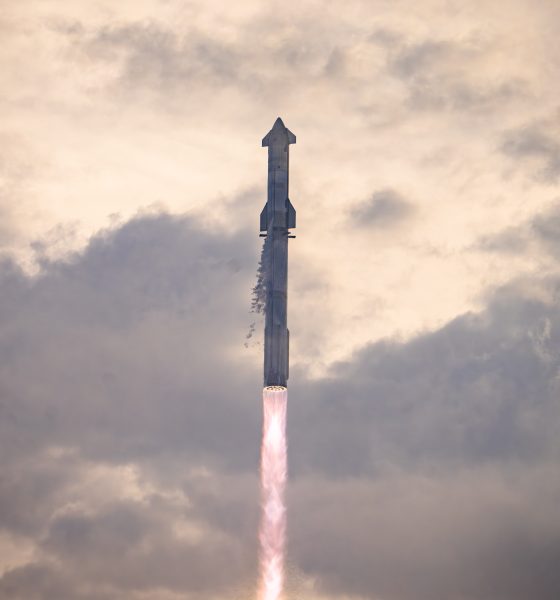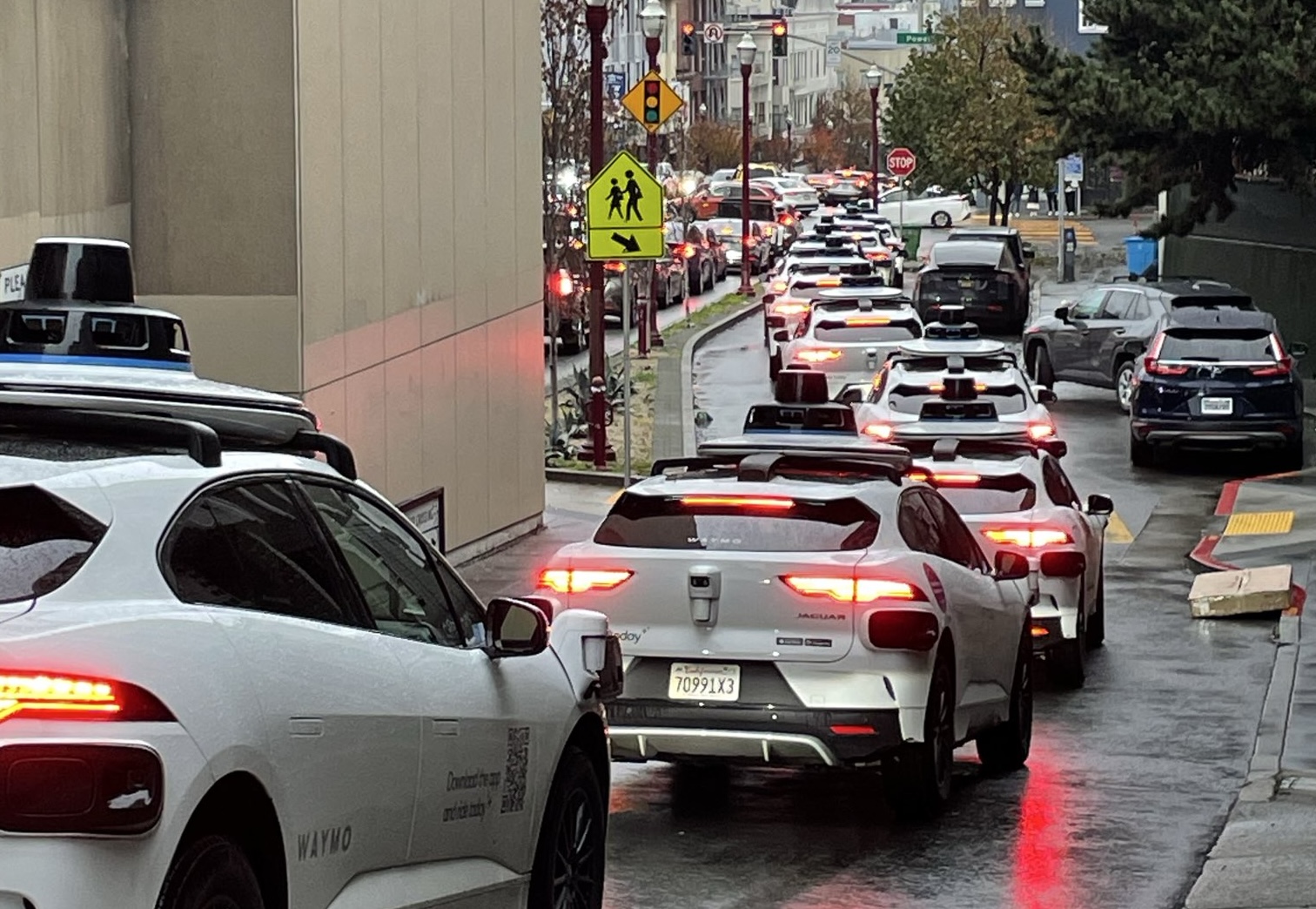

News
SpaceX successful in epic third Starship test launch
SpaceX was successful in its third test flight of the largest rocket ever as Starship took to the skies at 8:25 am CT from Starbase, Texas.
The massive rocket made it further than ever during its third flight, including successful stage separation and atmospheric re-entry.
Liftoff of Starship! pic.twitter.com/FaNcasuKaq
— SpaceX (@SpaceX) March 14, 2024
The 33 Raptor engines powered Booster 10 with Ship 28 stacked on top all the way through its portion of the flight, never losing one engine. Two minutes and 50 seconds into the flight, Booster 10 and Ship 28 went through the hot staging maneuver flawlessly.
Starship’s Raptor engines have ignited during hot-staging separation. Super Heavy is executing the flip maneuver pic.twitter.com/T593ACilyD
— SpaceX (@SpaceX) March 14, 2024
Booster 10 then relit some of its engines to perform the boost backburn toward a landing area just East of the launch pad in the Gulf of Mexico. The booster made it all the way through the burn and re-oriented itself to a vertical position as it plunged through the atmosphere and used its giant grid fins to help stabilize the vehicle.
During the final moments of the re-entry, the forces on the vehicle became too much, and around the 2 km mark, the booster engine attempted to light for the landing burn, but it appears a few failed, and the booster was lost shortly after.
While Booster 10 was plunging back through the atmosphere, Ship 28 continued to fly perfectly, burning all 6 Raptor engines to reach orbital velocity. The ships’ engines shut down just over eight and a half minutes into flight and were officially in space, coasting between the Florida Keys and Cuba on its way to its planned re-entry over the Indian Ocean.
Starship is coasting in space pic.twitter.com/ZFUXMUkufW
— SpaceX (@SpaceX) March 14, 2024
During the coast phase, SpaceX completed multiple in-flight tests, such as opening and closing the payload bay, or the pez door, as they put it. Following that, the rocket then performed a fuel transfer demonstration, moving fuel from the header tanks into the main tanks. This was the first time they had done this while in orbit, but according to Gwynne Shotwell, SpaceX’s president and COO, they are waiting to officially confirm this.
SpaceX had intended to perform a re-light of a Raptor engine while in space, however, they elected to skip that and attempt this during a future mission.
Pez door checkout complete, door closing, and HD views are over @Starlink pic.twitter.com/Kmb2SpMVTu
— SpaceX (@SpaceX) March 14, 2024
Ship 28 then began atmospheric entry 46 minutes into the mission. Thanks to the Starlink connection, SpaceX was able to provide amazing views of the plasma build-up around the ship, something that is generally never seen as the plasma blocks the signal on smaller vehicles.
Starship re-entering Earth’s atmosphere. Views through the plasma pic.twitter.com/HEQX4eEHWH
— SpaceX (@SpaceX) March 14, 2024
Just over 49 minutes into the flight, during peak heating, the Starship data connection was lost with both Starlink and TDRS (Tracking and Data Relay satellites), the former being used for all vehicles in space, including the Crew Dragon capsule.
The on-screen telemetry stopped at a speed of 25,707 km/h at a height of 65 km. SpaceX said that with both signals dropping at the same time, it is likely the ship broke up during re-entry and did not make the planned intact splashdown.
While neither Booster 10 nor Ship 28 made it 100% to their planned splashdown, this third test flight was a massive win for SpaceX, and the company will look to complete the fourth flight test within a couple of months.
Questions or comments? Shoot me an email at rangle@teslarati.com, or Tweet me @RDAnglePhoto.

News
Waymo scrutinized after self-driving taxis cause traffic jams during SF blackout
It’s not farfetched to speculate that it would have been a doomsday scenario for Tesla had FSD behaved this way.

A power outage across San Francisco over the weekend forced numerous Waymo self-driving taxis to stop at darkened intersections and cause traffic blockages in multiple locations across the city. The disruption left riders stranded, frustrated drivers blocked, and city officials stepping in as the Alphabet-owned company temporarily suspended service amid the widespread gridlock.
Needless to say, it would likely have been a doomsday scenario for Tesla had FSD behaved in a similar way, especially if fleets of its robotaxis blocked traffic for numerous drivers.
Power outage halts Waymo fleet
The outage knocked out electricity for tens of thousands of customers, leaving traffic signals dark across large parts of the city, as noted in a report from the New York Times. Waymo vehicles began stopping at intersections and remained stationary for extended periods, seemingly unable to operate. Tow truck operators worked through the night removing immobilized vehicles, while videos circulated online showing Waymos with hazard lights flashing as traffic backed up around them.
Waymo later confirmed that it had paused its Bay Area ride-hailing service after the San Francisco mayor’s office contacted the company about the congestion its vehicles were contributing to. Service began coming back online shortly after 3:30 p.m. local time, though some users still reported being unable to request rides. Waymo maintained that no injuries or accidents were reported during the outage.
Autonomous cars during emergencies
The incident surprised industry observers since autonomous vehicles are designed to function during signal outages and temporary connectivity losses. Waymo stated that its vehicles treat nonfunctional signals as four-way stops, but “the sheer scale of the outage led to instances where vehicles remained stationary longer than usual to confirm the state of the affected intersections. This contributed to traffic friction during the height of the congestion.” Experts suggested the problem may have been linked to the vehicles’ reliance on remote assistance teams, which help resolve complex situations the cars cannot handle independently.
“Yesterday’s power outage was a widespread event that caused gridlock across San Francisco, with non-functioning traffic signals and transit disruptions. While the failure of the utility infrastructure was significant, we are committed to ensuring our technology adjusts to traffic flow during such events,” the Waymo spokesperson stated, adding that it is “focused on rapidly integrating the lessons learned from this event, and are committed to earning and maintaining the trust of the communities we serve every day.”
News
Tesla aims to combat common Full Self-Driving problem with new patent
Tesla writes in the patent that its autonomous and semi-autonomous vehicles are heavily reliant on camera systems to navigate and interact with their environment.

Tesla is aiming to combat a common Full Self-Driving problem with a new patent.
One issue with Tesla’s vision-based approach is that sunlight glare can become a troublesome element of everyday travel. Full Self-Driving is certainly an amazing technology, but there are still things Tesla is aiming to figure out with its development.
Unfortunately, it is extremely difficult to get around this issue, and even humans need ways to combat it when they’re driving, as we commonly use sunglasses or sun visors to give us better visibility.
Cameras obviously do not have these ways to fight sunglare, but a new patent Tesla recently had published aims to fight this through a “glare shield.”
Tesla writes in the patent that its autonomous and semi-autonomous vehicles are heavily reliant on camera systems to navigate and interact with their environment.

The ability to see surroundings is crucial for accurate performance, and glare is one element of interference that has yet to be confronted.
Tesla described the patent, which will utilize “a textured surface composed of an array of micro-cones, or cone-shaped formations, which serve to scatter incident light in various directions, thereby reducing glare and improving camera vision.”

The patent was first spotted by Not a Tesla App.
The design of the micro-cones is the first element of the puzzle to fight the excess glare. The patent says they are “optimized in size, angle, and orientation to minimize Total Hemispherical Reflectance (THR) and reflection penalty, enhancing the camera’s ability to accurately interpret visual data.”
Additionally, there is an electromechanical system for dynamic orientation adjustment, which will allow the micro-cones to move based on the angle of external light sources.
This is not the only thing Tesla is mulling to resolve issues with sunlight glare, as it has also worked on two other ways to combat the problem. One thing the company has discussed is a direct photon count.
CEO Elon Musk said during the Q2 Earnings Call:
“We use an approach which is direct photon count. When you see a processed image, so the image that goes from the sort of photon counter — the silicon photon counter — that then goes through a digital signal processor or image signal processor, that’s normally what happens. And then the image that you see looks all washed out, because if you point the camera at the sun, the post-processing of the photon counting washes things out.”
Future Hardware iterations, like Hardware 5 and Hardware 6, could also integrate better solutions for the sunglare issue, such as neutral density filters or heated lenses, aiming to solve glare more effectively.
Elon Musk
Delaware Supreme Court reinstates Elon Musk’s 2018 Tesla CEO pay package
The unanimous decision criticized the prior total rescission as “improper and inequitable,” arguing that it left Musk uncompensated for six years of transformative leadership at Tesla.

The Delaware Supreme Court has overturned a lower court ruling, reinstating Elon Musk’s 2018 compensation package originally valued at $56 billion but now worth approximately $139 billion due to Tesla’s soaring stock price.
The unanimous decision criticized the prior total rescission as “improper and inequitable,” arguing that it left Musk uncompensated for six years of transformative leadership at Tesla. Musk quickly celebrated the outcome on X, stating that he felt “vindicated.” He also shared his gratitude to TSLA shareholders.
Delaware Supreme Court makes a decision
In a 49-page ruling Friday, the Delaware Supreme Court reversed Chancellor Kathaleen McCormick’s 2024 decision that voided the 2018 package over alleged board conflicts and inadequate shareholder disclosures. The high court acknowledged varying views on liability but agreed rescission was excessive, stating it “leaves Musk uncompensated for his time and efforts over a period of six years.”
The 2018 plan granted Musk options on about 304 million shares upon hitting aggressive milestones, all of which were achieved ahead of time. Shareholders overwhelmingly approved it initially in 2018 and ratified it once again in 2024 after the Delaware lower court struck it down. The case against Musk’s 2018 pay package was filed by plaintiff Richard Tornetta, who held just nine shares when the compensation plan was approved.
A hard-fought victory
As noted in a Reuters report, Tesla’s win avoids a potential $26 billion earnings hit from replacing the award at current prices. Tesla, now Texas-incorporated, had hedged with interim plans, including a November 2025 shareholder-approved package potentially worth $878 billion tied to Robotaxi and Optimus goals and other extremely aggressive operational milestones.
The saga surrounding Elon Musk’s 2018 pay package ultimately damaged Delaware’s corporate appeal, prompting a number of high-profile firms, such as Dropbox, Roblox, Trade Desk, and Coinbase, to follow Tesla’s exodus out of the state. What added more fuel to the issue was the fact that Tornetta’s legal team, following the lower court’s 2024 decision, demanded a fee request of more than $5.1 billion worth of TSLA stock, which was equal to an hourly rate of over $200,000.
Delaware Supreme Court Elon Musk 2018 Pay Package by Simon Alvarez








